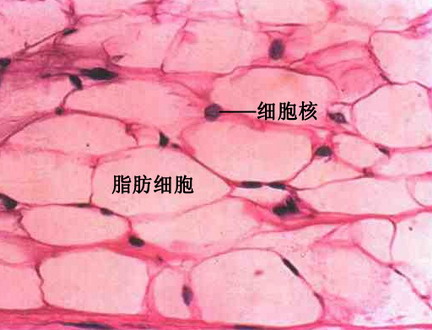一种酶被人体脂肪组织控制的能量水平在大脑分泌的,根据新的研究,在路易斯的华盛顿大学医学院。在小鼠的研究,强调,在控制大脑对食物的反应缺乏身体的脂肪组织的作用,并建议有身体脂肪对健康和长寿的最佳数量最大化。

这项研究发表在四月二十三日的杂志细胞代谢。
“我们在一个很有趣的方式表明,脂肪组织控制的脑功能,”资深作者Shin-ichiro今井,MD,PhD,发育生物学和医学教授。”结果表明,有脂肪组织,最大限度地提高大脑的老化和长寿的最佳量控制中心的功能。我们仍然不知道是多少或如何可能因人而异。但至少在老鼠实验中,我们知道,如果他们没有足够的一个关键酶由脂肪产生,大脑的一个重要部分,不能维持自己的能量水平。”这些发现可能有助于解释许多研究表明生存利益具有对超重低身体质量指数。“随着我们年龄的增长,人稍微超重往往有较少的问题,“今井说。”没有人知道为什么人归类为稍微超重往往有较低的死亡率。但我们的研究表明,如果你没有脂肪的最佳数量的影响,你的大脑控制代谢和衰老是尤为重要的一部分。”
今井和他的同事们研究细胞是如何产生和利用能源和如何影响衰老。他们和其他人过去的工作表明一种酶的重要性被称为Nampt生产至关重要的细胞燃料被称为NAD。传统上,Nampt被认为对细胞内制造这种燃料是重要的。但今井和他的团队成员注意到脂肪组织制成很多Nampt结束了在细胞外,在血液中循环。“一直有很多争议的领域是否外Nampt的身体有任何作用,”今井说。“一些研究者说,这只是一个结果,从死细胞泄漏。但我们的数据表明,它是一种高活性的酶是高度管制的。”
这种微调调节显示分泌Nampt是身体做一些重要的地方。找出是什么,研究人员提出,缺乏只有在脂肪组织中Nampt小鼠产生的能力。“我们并不惊讶地看到,能量水平下降时,脂肪组织的脂肪组织缺乏这种酶,“今井说。”其他组织如肝脏和肌肉的影响。但有一个遥远的位置的影响,这是下丘脑。”下丘脑是大脑的已知在维持机体生理有重要作用的一部分,包括调节体温,睡眠周期,心率,血压,口渴、食欲。在脂肪组织中Nampt在低水平低的小鼠下丘脑的燃料。这些小鼠也表现出较低的体力活动的措施比没有这种缺陷小鼠。
他们的研究结果表明,脂肪组织和下丘脑具体沟通,影响大脑的方式控制身体的生理的设定点。事实上,从今井的集团过去的工作也支持全身代谢下丘脑的重要作用。他们发现,增加一个称为SIRT1在小鼠下丘脑蛋白表达增加的小鼠的寿命,模拟限制卡路里饮食的影响。今井认为,所有这些过程的相互影响。他们对下丘脑过去的工作还表明,SIRT1的功能是依赖于细胞内的能量水平。和新的文件链接的能量水平在下丘脑的脂肪组织的新发现的功能。
检查与脂肪组织,不会使Nampt小鼠后会发生什么,他们进行了对比实验,研究产生了更多的Nampt在脂肪组织中的小鼠相比,是典型的。小鼠脂肪组织中高水平表达Nampt非常活跃。他们的活动水平是特别明显的禁食。在脂肪组织低Nampt的小鼠变得更加迟钝的禁食期后。在脂肪组织中Nampt过量小鼠出现不受没有食物的时间,剩余活性水平与正常小鼠无限制饮食。事实上,有很多的脂肪产生Nampt的小鼠的行为非常类似于老鼠大脑中的很多SIRT1。
今井说,他们正在研究是否在脂肪增加寿命NAMPT过量,因为他们发现在小鼠脑内SIRT1过多。研究人员还发现他们可以暂时提升小鼠体力活动和脂肪组织中Nampt低注射NMN,这种酶Nampt产生的化合物。今井正在调查NMN在与衰老相关的疾病的一种可能的干预。今井推测这Nampt信号从脂肪组织,特别是在空腹,可作为一种生存机制。“这种现象在野外是有意义的,”今井说。“如果你不能得到食物,你只是坐在那里等着,你将无法生存。所以大脑,与脂肪组织一起工作,有一个办法,让你去踢中生存,甚至当食物稀缺。”
这项研究是由国家国立卫生研究院(NIH)老化研究所支持,资助号ag024150,ag037457和ag047902,和Ellison医学基金会。
原文
Fat tissue controls brain's response to food scarcity, helping regulate optimal amount of body fat for brain function
An enzyme secreted by the body's fat tissue controls energy levels in the brain, according to new research at Washington University School of Medicine in St. Louis. The findings, in mice, underscore a role for the body's fat tissue in controlling the brain's response to food scarcity, and suggest there is an optimal amount of body fat for maximizing health and longevity.The study appears April 23 in the journal Cell Metabolism.
"We showed that fat tissue controls brain function in a really interesting way," said senior author Shin-ichiro Imai, MD, PhD, professor of developmental biology and of medicine. "The results suggest that there is an optimal amount of fat tissue that maximizes the function of the control center of aging and longevity in the brain. We still don't know what that amount is or how it might vary by individual. But at least in mice, we know that if they don't have enough of a key enzyme produced by fat, an important part of the brain can't maintain its energy levels."
The findings may help explain the many studies that show a survival benefit to having a body mass index toward the low end of what is considered overweight."As we age, people who are slightly overweight tend to have fewer problems," Imai said. "No one knows why people categorized as being slightly overweight tend to have a lower mortality rate. But our study suggests that if you don't have an optimal amount of fat, you are affecting a part of the brain that is particularly important for controlling metabolism and aging."
Imai and his colleagues study how cells produce and utilize energy and how that affects aging. Past work of theirs and others demonstrated the importance of an enzyme called NAMPT in producing a vital cellular fuel called NAD. Traditionally, NAMPT is thought to be important for making this fuel inside cells. But Imai and members of his team noticed that fat tissue churned out a lot of NAMPT that ended up outside cells, circulating in the bloodstream."There's been a lot of controversy in the field about whether extracellular NAMPT has any function in the body," Imai said. "Some researchers have said it's just a result of leakage from dead cells. But our data indicate it is a highly active enzyme that is highly regulated."
Such fine-tuned regulation suggests secreted NAMPT is doing something important somewhere in the body. To find out what that is, the researchers raised mice that lacked the ability to produce NAMPT only in the fat tissue."We were not surprised to see that energy levels in the fat tissue plummeted when fat tissue lacked this key enzyme," Imai said. "Other tissues such as the liver and muscles were unaffected. But there was one distant location that was affected, and that was the hypothalamus."
The hypothalamus is a part of the brain known to have important roles in maintaining the body's physiology, including regulating body temperature, sleep cycles, heart rate, blood pressure, thirst and appetite. Mice with low NAMPT in fat tissue had low fuel levels in the hypothalamus. These mice also showed lower measures of physical activity than mice without this defect.Their findings suggest that fat tissue communicates specifically with the hypothalamus, influencing the way the brain controls the body's physiologic set points. Indeed, past work from Imai's group also supported an important role for the hypothalamus in whole body metabolism. They showed that increasing the expression of a protein called SIRT1 in the mouse hypothalamus increased the mouse lifespan, mimicking the effects of a calorie-restricted diet.
Imai suspects that all these processes influence one another. Their past work on the hypothalamus also had shown that SIRT1 function is dependent on energy levels in cells. And the new paper links energy levels in the hypothalamus to the fat tissue's newly identified function.After examining what happens to mice with fat tissue that doesn't make NAMPT, they performed the opposite experiment, studying mice that produced more NAMPT in fat tissue than is typical.
Mice that expressed high levels of NAMPT in the fat tissue were very physically active. Their activity levels were especially pronounced after fasting. The mice with low NAMPT in the fat tissue became even more lethargic after the fasting period. The mice with an overabundance of NAMPT in the fat tissue appeared unaffected by the period of time without food, remaining at activity levels similar to normal mice without food restriction. In fact, the mice with a lot of NAMPT produced in their fat behaved very similarly to the mice with a lot of SIRT1 in the brain.
Imai said they are now studying whether an overabundance of NAMPT in the fat increases lifespan, as they showed in the mice with an overabundance of SIRT1 in the brain.
The researchers also found they could temporarily boost the physical activity of the mice with low NAMPT in the fat tissue by injecting NMN, the compound that the enzyme NAMPT produces. Imai is investigating NMN as a possible intervention in diseases associated with aging.Imai speculated that this NAMPT signal from the fat tissue, especially in response to fasting, may serve as a survival mechanism."This phenomenon makes sense in the wild," Imai said. "If you can't get food and you just sit around and wait, you won't survive. So the brain, working in conjunction with the fat tissue, has a way to kick in and let you move to survive, even when food is scarce."
This research was supported by the National Institute on Aging of the National Institutes of Health (NIH), grant numbers AG024150, AG037457 and AG047902, and by the Ellison Medical Foundation.



